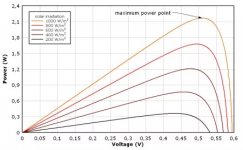Hi All,
Imagine a roof with the same tilt and one roof faces east and the other roof faces west. The two roofs are exactly the same.
We have inverters to which 20 strings can be connected. Do we install 20 strings in 1 direction, for example towards the west or
do we divide the number of strings over the two roofs.
So 10 strings to the east and 10 strings to the west
What do you guy think?
Kind regards
Ben
Imagine a roof with the same tilt and one roof faces east and the other roof faces west. The two roofs are exactly the same.
We have inverters to which 20 strings can be connected. Do we install 20 strings in 1 direction, for example towards the west or
do we divide the number of strings over the two roofs.
So 10 strings to the east and 10 strings to the west
What do you guy think?
Kind regards
Ben



